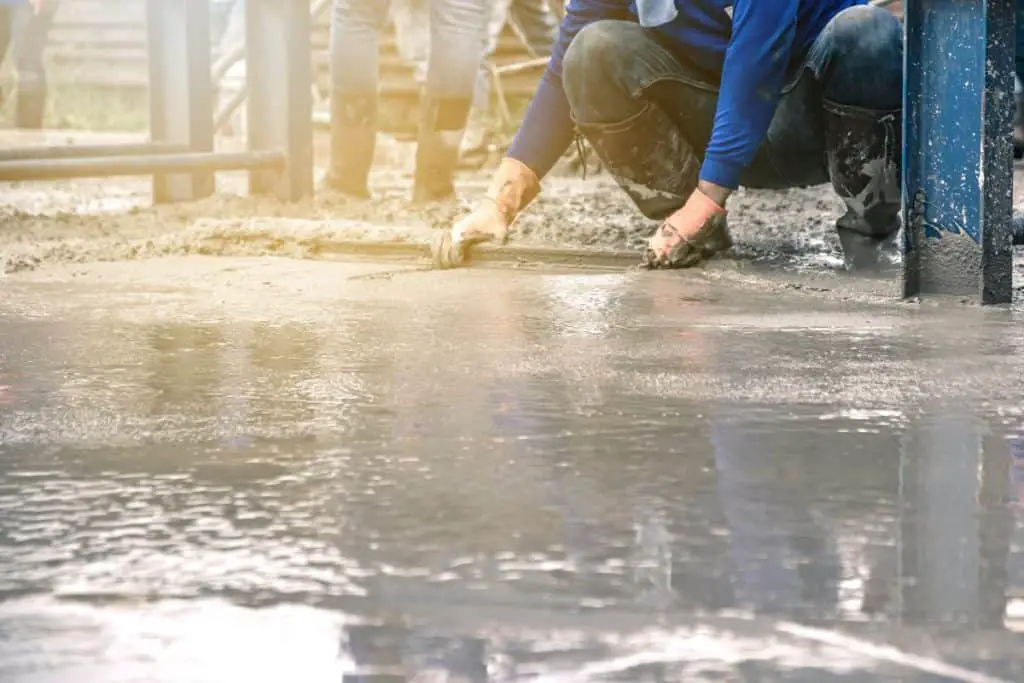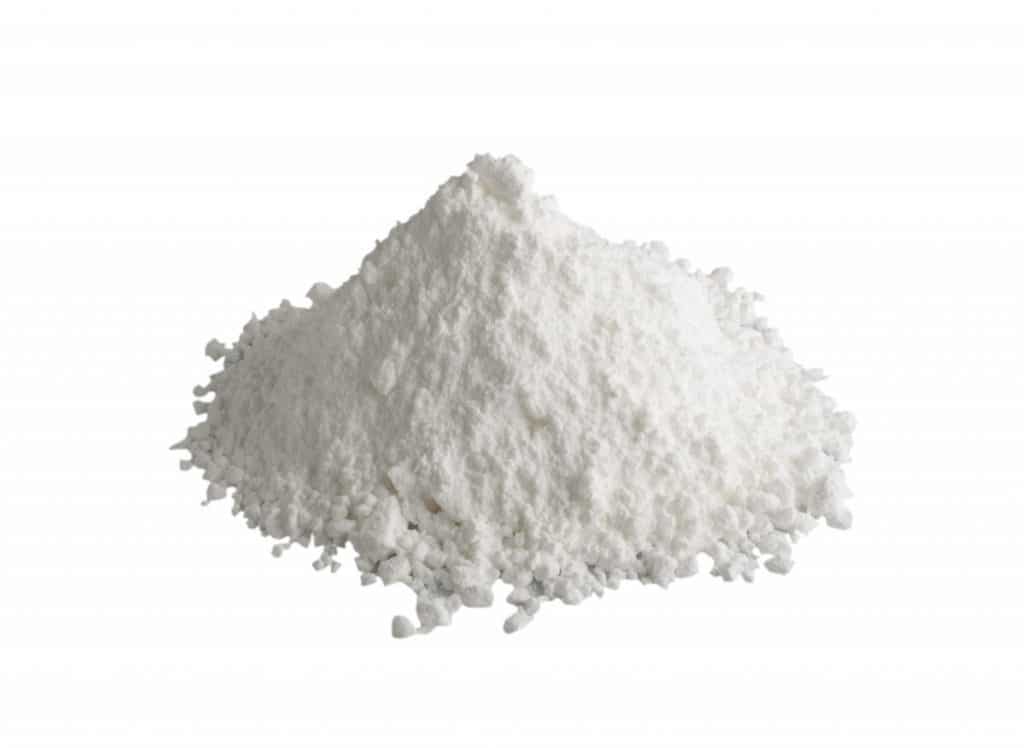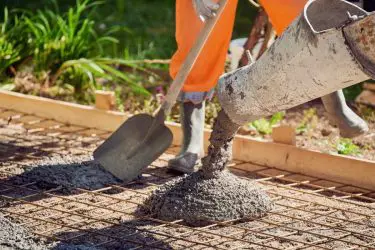Now that you’re done mixing, pouring, and curing the concrete for your project, you might realize that…well, it’s absorbing water! Isn’t concrete meant to be hard and dry? Well, the reason why your concrete absorbs water is related to the water you used in the mixture and could potentially be a problem.
Concrete absorbs water because after the concrete cures and the water evaporates from the mixture, the bubbles leave behind a network of small tunnels and air pockets within the concrete. These holes and air pockets create a porous structure that will absorb any water that drains into the structure.
Let’s get into the chemical reasons why concrete absorbs water, why water is a factor, and how it could potentially create problems for your concrete in the future.

Table of Contents
Components Of Concrete
Concrete is made from a cement mixture like Portland cement, mixed in with water and aggregates like sand and gravel. These aggregates are used to help support and harden the structure of the concrete.
The cement, water, and aggregates are usually added together by hand or can be mixed using a mechanical mixer. It’s always best to consult the instructions before adding too much or too little water. It could result in cement that’s too water and thus too soft, or cement that’s incredibly hard to work.

Portland cement has a slew of chemical compounds:
- Tetracalcium aluminoferrite
- Tricalcium aluminate
- Dicalcium silicate
- Tricalcium silicate
- Gypsum
All these chemicals will form together to harden. But before it can do that, we need to add water. Source
Just Add Water
Water is what causes all the chemical reactions between your cement and aggregates. Water makes the cement harden and bind all the composite materials together to make concrete structures like sidewalks, garage floors, and other architectural structures.
The calcium components in the cement will start strengthening the component almost immediately and within the first seven days. As the cement is drying, or “curing,” over the next 28 days or so, the dicalcium silicate will begin to contribute to its full strength.
The key, as stated above, is adding just the right amount of water so that the cement does what you want it to do. One crucial fact that most people don’t know about cement is that, during its entire lifetime, it never dries.
“What do you mean, it never dries?” you might ask. “Surely it must dry sometime?“
Actually, no. Concrete never fully dries. This is because water gets trapped within the chemical reactions and becomes a part of the structure of the concrete. So, water never technically leaves the concrete. The chemical reaction, started by the water, will continue for years after it sets.
There is also the environmental factor Most experts in using and creating concrete will tell you that concrete must be mixed and poured when the surface and air temperature is above 50°F (10°C).
If the concrete is installed in cold, freezing, or humid environments can cause cracks and rifts in the concrete that water can take advantage of, later on, widening them. For example, in basements when it tends to be humid and dark, a previously dry concrete floor can start smelling like mold

Concrete Curing
When you’re finished installing the concrete, it goes through a process called “curing.” This isn’t just where the concrete dries and hardens. Instead, curing means preserving enough water in the concrete within the right range of temperatures.
Keeping the concrete hydrated allows the chemical reactions to take place within the concrete. Those reactions eventually let the concrete set and harden.
This is why new concrete is often sprayed or hosed down with water between 5 – 10 times a day during the first 7 days after installation. Doing this will allow the concrete to cure slowly and thus allow as much time for the chemical reactions to take place.
However, experts recommend you do not spray new concrete that was installed in colder air and surface temperatures. Make sure the new concrete is covered and, should you choose, you can make the process easier by applying a curing compound to the concrete.

Water Tightness Factors
Using too much water will result in a low water tightness factor, meaning that after the concrete has hardened, it will absorb more water. The more water you add to the cement mix, the weaker the cement will become. Too little water will make the concrete unwieldy and difficult to install.
The type of concrete mix affects water tightness as well. The denser the cement mix, the less porous the cement will be. You can add materials such as fly ash, slag, and silica fume to the mix to increase the water tightness of your concrete.
The aggregates that are included with the mixture can greatly affect how much water your concrete absorbs. The shape and texture of these aggregates should be taken into account. Experts recommend round, fine, and coarse aggregates. If not used, these can affect the concrete’s integrity once set.
Lastly, and perhaps most importantly, make sure to follow the manufacturing instructions and processes closely while installing and curing your concrete. Depending on which brand of concrete mix you buy, consult with an expert about how to make your concrete as watertight as you can.
“Magic” Concrete
There is some concrete that is meant to be porous and is designed to absorb surface water.
A company in the UK called Tarmac has created a type of concrete called Topmix Permeable concrete. The concrete allows 36,000 millimeters of water an hour (880 gallons per minute) to permeate the concrete into the soil beneath.
Instead of using fine aggregates like sand, Tarmac has used crushed granite that has been packed loosely together. This allows the concrete to be porous enough to allow water through while still maintaining its integrity.
Read more: Concrete vs Tarmac vs Asphalt: What’s the difference?
This kind of invention goes against conventional wisdom and yet solves the problem of too much water. Humid areas can now collect all that excess rainwater and recycle it for later use.
In the end, how you mix your concrete matters. Water tightness and porosity are important factors when planning your project and should be taken into consideration to save you time, money, and frustration by the end of your concrete project.



